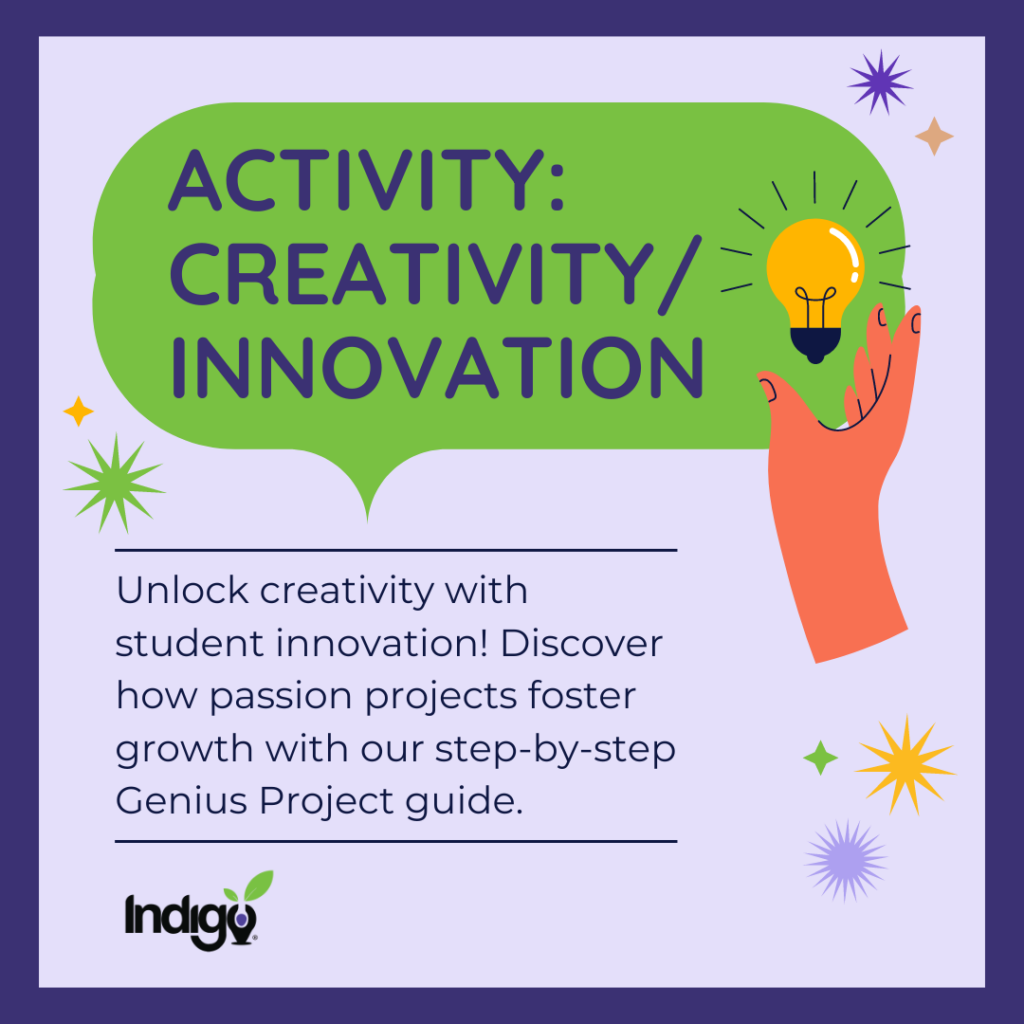Unleashing Student Creativity and Innovation!
Imagine a world where students are given the same freedom to innovate as engineers at Google, who spend 20% of their time on passion projects. What could our students achieve with similar flexibility to pursue their own genius?
This blog post explores the concept of the "Genius Project," a commitment to creativity and personal growth. Students will brainstorm ideas, write proposals, dedicate time each week to their projects, and present their results—all while tying their efforts to their top motivators and skills. Join us in redefining student potential and fostering a new wave of creativity and innovation.
The Goal
Google, a company with a reputation for innovation, gives its engineers one day a week to work on a passion project. That’s right—20% of their billing time is spent pursuing ideas and interests that may only loosely tie back to their workflow. What would happen if we gave students the same flexibility? What if we gave them the time to pursue their own genius?
Note: This exercise is a commitment. It requires time and a willingness to engage in serious exploration and growth over the course of months.
Optional Add-On: To develop “Time and Priority Management” and “Planning and Organizing” skills, write a proposal that includes how you plan to manage your time over the course of this project and define the different tasks you must complete before the project is considered complete. Essentially, you will submit a detailed plan of how you will carry your project out and manage your own time over the planned timeframe of the project.
Step 1:
Brainstorm what your “Genius Project” could be. Your ideas should be specific to you as an individual. Your passion project must be tied to your top one or two Motivators so start brainstorming by looking at your Motivators on your Indigo Summary Page.
Examples of ideas: starting and growing a new club at school for people interested in coding or investing, building a business, planning a school-wide volunteering day, writing and producing a one-act show for students, leading a full-fledged fundraiser for an initiative that you care about, managing your school’s social media initiatives, learning to build a website from scratch, working on a massive art project or performance, etc.
Step 2:
Write a one-page proposal. The proposal should explain the overall project scope and also how it fits your top one or two Motivators. You should explain how you plan to utilize your top five Skills from your Indigo Summary Page to execute your project. Hold yourself accountable to picking a project that fits you and is sufficiently challenging.
Step 3:
Spend one or two hours a week pursuing your project. This project can be as long or as short as you would like it to be, but the sweet spot is at least 15-20 hours—enough time for you to develop serious projects with a large scope of work.
Step 4:
Create a presentation about the end results of your project. This can be in any form you choose—presentation, essay, collage, video, website, etc. – as long as it is clear that the results reflect your true genius and genuine effort. In your final presentation of the project, you should demonstrate how the project tied in to your top Motivators and how you used your top Skills to successfully complete the project.

